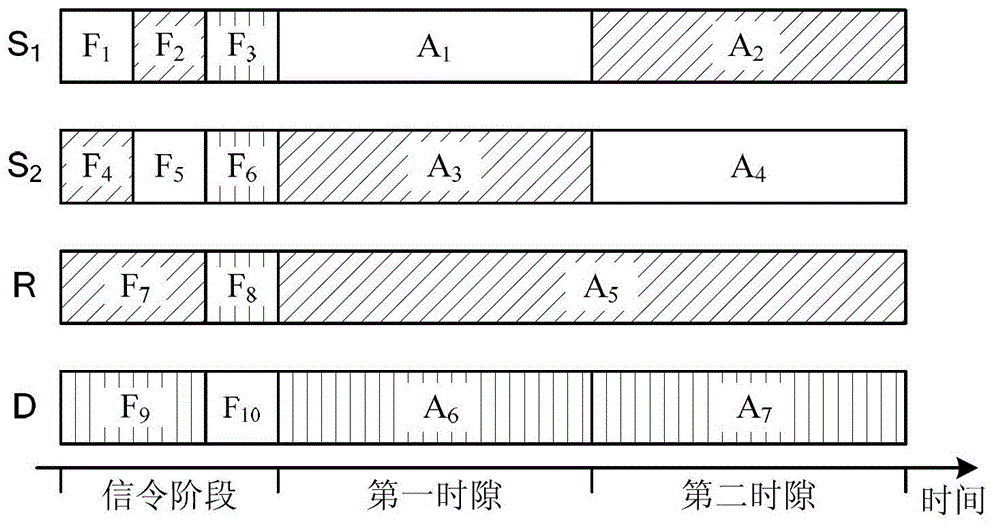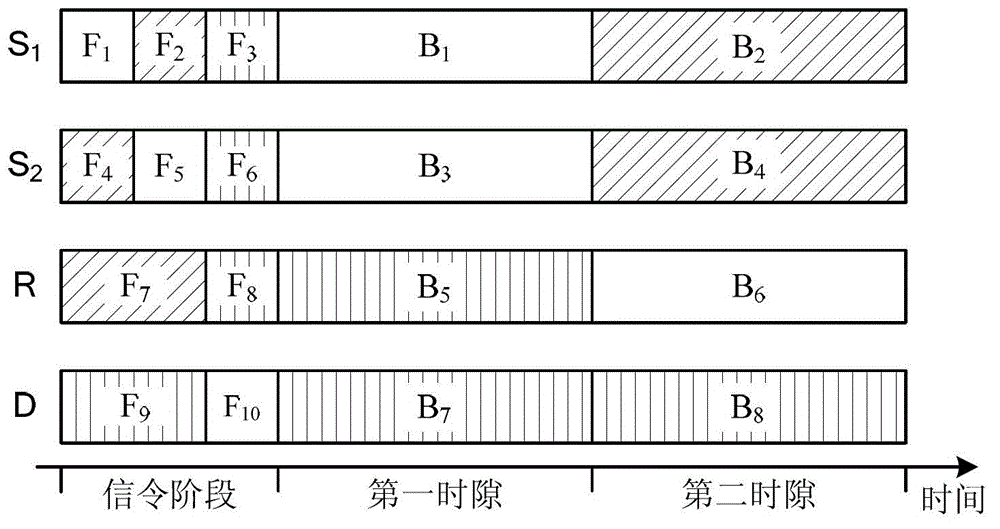Wireless relay network uplink transmission method based on blind known interference cancellation
A wireless relay network and interference elimination technology, applied in the field of wireless communication and network, can solve the problem of low spectrum efficiency, achieve the effect of reducing the number of time slots, overcoming the decline of system spectrum efficiency, and avoiding measurement and reporting
- Summary
- Abstract
- Description
- Claims
- Application Information
AI Technical Summary
Problems solved by technology
Method used
Image
Examples
Embodiment 1
[0023] This embodiment illustrates the specific operation process of the uplink transmission method of the wireless relay network based on blind known interference cancellation in the present invention.
[0024] figure 1 It is a schematic diagram of an existing conventional single-cell wireless relay network uplink transmission model. In the uplink transmission of the conventional single-cell wireless relay network, the entire cell can be divided into three types of areas, namely: the service coverage area e of the relay node R T1 , the high-speed service coverage area e of base station D T2 , and the low-speed service coverage area e of base station D T3 . Service coverage area e located at relay node R T1 The users in the network are referred to as "the first type of users" below, as shown in the conventional single-cell wireless relay network uplink transmission model figure 1 The first user S shown in 1 , the fourth user S 4 , they are far away from base station D, ...
PUM
 Login to View More
Login to View More Abstract
Description
Claims
Application Information
 Login to View More
Login to View More - R&D
- Intellectual Property
- Life Sciences
- Materials
- Tech Scout
- Unparalleled Data Quality
- Higher Quality Content
- 60% Fewer Hallucinations
Browse by: Latest US Patents, China's latest patents, Technical Efficacy Thesaurus, Application Domain, Technology Topic, Popular Technical Reports.
© 2025 PatSnap. All rights reserved.Legal|Privacy policy|Modern Slavery Act Transparency Statement|Sitemap|About US| Contact US: help@patsnap.com



